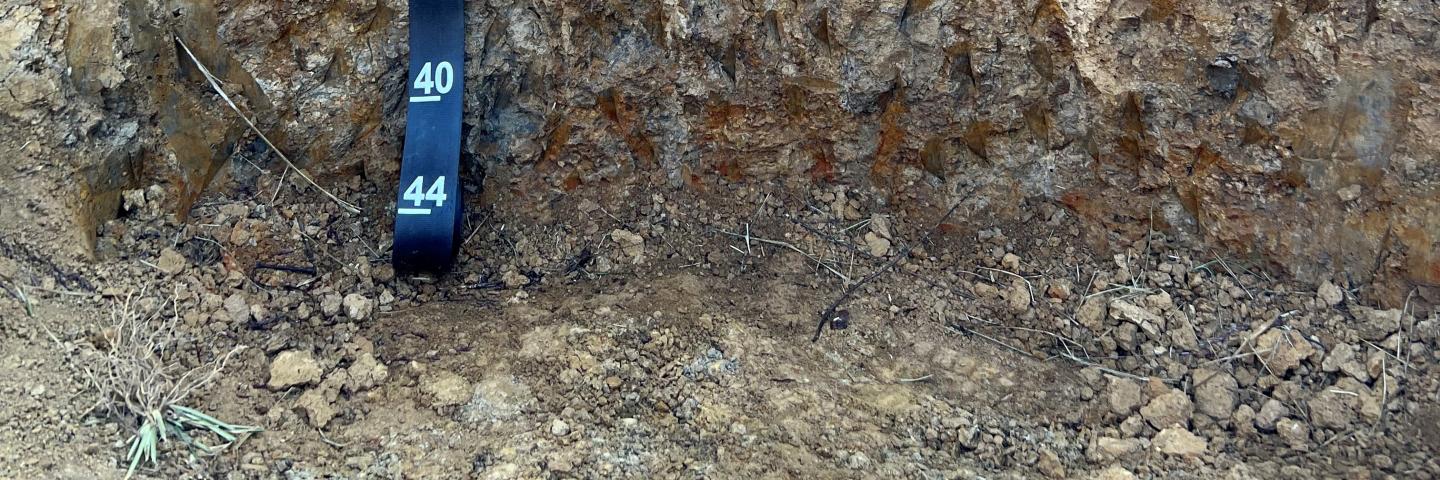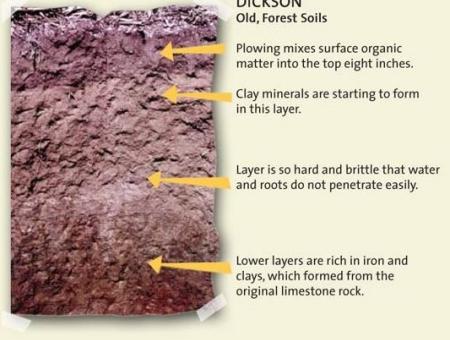
Dickson: Tennessee State Soil
The Dickson is the official state soil of Tennessee. Let’s explore how the Dickson is important to Tennessee. The Dickson series was established in 1923 in Dickson County, Tennessee, where it was first mapped in the Soil Survey of Dickson County, Tennessee (published 1926).
The Dickson series consists of very deep, moderately well drained soils that formed in a silty mantle 2 to 4 feet thick and in the underlying limestone residuum. Most areas of these soils are on nearly level to gently sloping uplands. The Dickson series is characterized by a firm and brittle fragipan that is 18 to 36 inches below the soil surface. Dickson soils occur on more than 400,000 acres. Corn and soybeans are the principal row crops. Most pastures support tall fescue and white clover. The mean annual precipitation is about 50 inches, and the mean annual air temperature is about 60 degrees F.
Dickson Soil Profile
- Surface layer: brown silt loam
- Subsoil - upper: yellowish brown silt loam
- Subsoil - middle: a firm and brittle fragipan of yellowish-brown silt loam
- Subsoil - lower: red clay
Introduction
Many states have a designated state bird, flower, fish, tree, rock, etc. And, many states also have a state soil – one that has significance or is important to the state. The Dickson is the official state soil of Tennessee. Let’s explore how the Dickson is important to Tennessee.
History
The Dickson series was established in 1923 in Dickson County, Tennessee, where it was first mapped in the Soil Survey of Dickson County, Tennessee (published 1926). At the time of the first soil survey about 50% of the acreage was being cultivated with the remaining acreage in forestland. Hugh Hammond Bennett collected samples of Dickson soils from both cultivated and forested settings and studied the moisture retention of the soils. Dickson was selected by the Tennessee NRCS Soil Survey Staff as the state soil due to its acreage and extent mapped within Tennessee.
What is Dickson Soil?
Every soil can be separated into three separate size fractions called sand, silt, and clay, which makes up the soil texture. They are present in all soils in different proportions and say a lot about the character of the soil. In a typical profile of Dickson, the topsoil is brown, friable (easily crumbles) silt loam. The subsoil is yellowish brown to pale brown, friable silt loam. Within the subsoil layer, at a depth ranging from 18 to 36 inches, is a compact and brittle layer called a fragipan. A fragipan is very dense and almost cement like. The fragipan restricts root growth and slows or stops water from moving through the soil profile. The fragipan is a very firm (does not crumble easily), yellowish brown silt loam or silty clay loam. Below the fragipan, to a depth of about 7 feet, is a layer of firm (does not crumble easily), red clay weathered from limestone (Figure 1).

Dickson: Tennessee State Soil
Many states have a designated state bird, flower, fish, tree, rock, etc., and, many states also have a state soil – one that has significance or is important to the state. The Dickson is the official state soil of Tennessee. Let’s explore how the Dickson is important to Tennessee.

